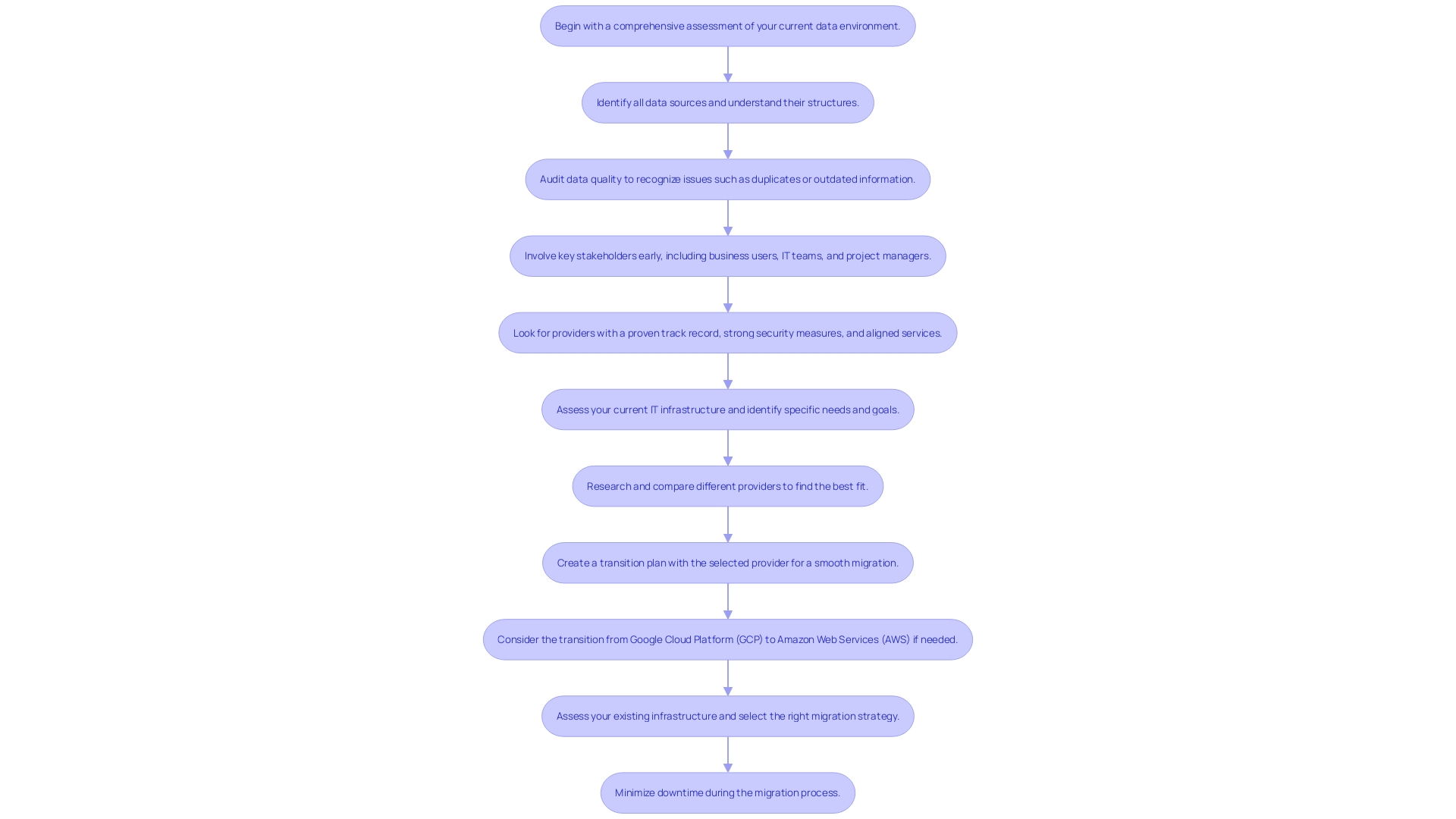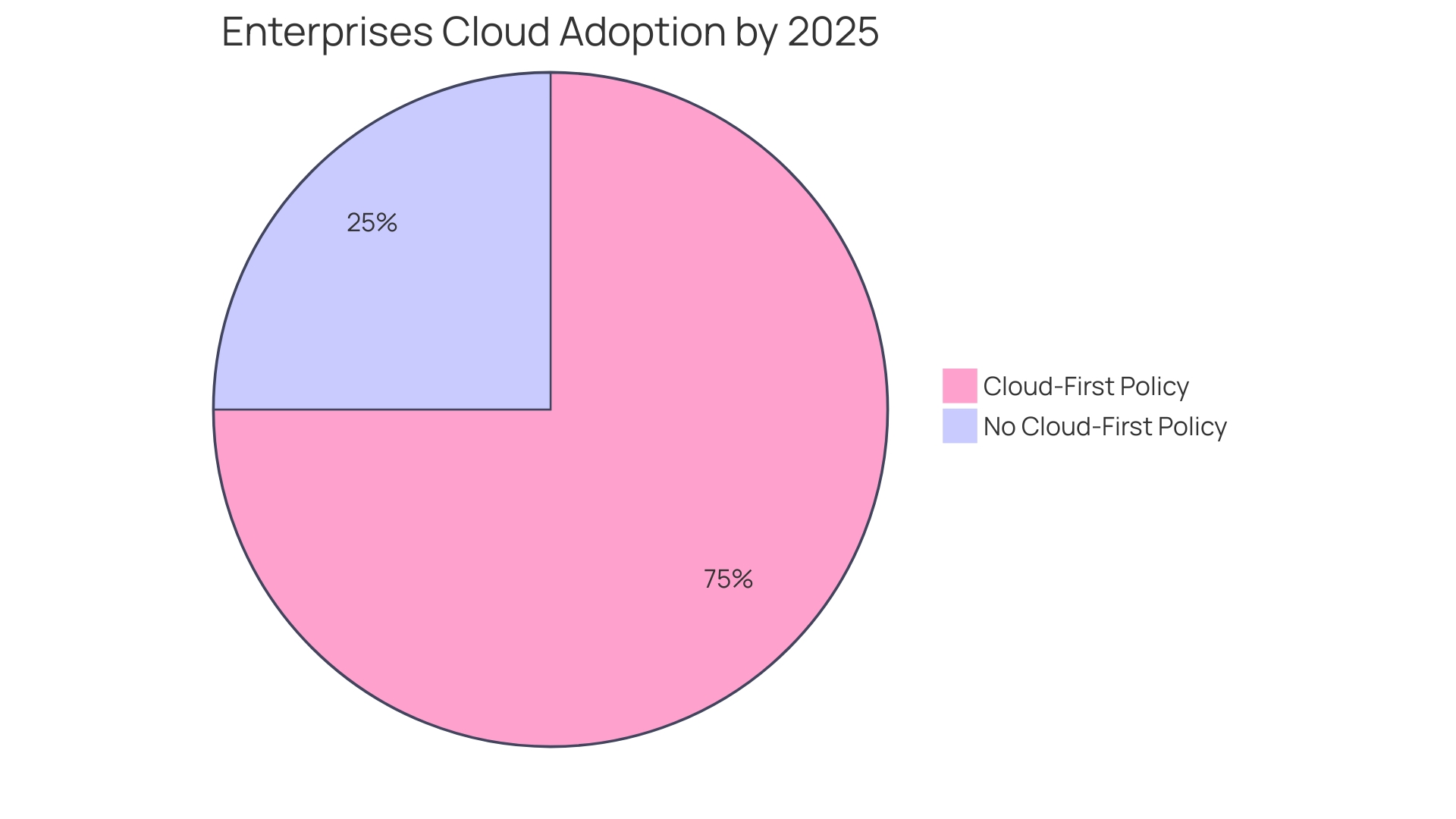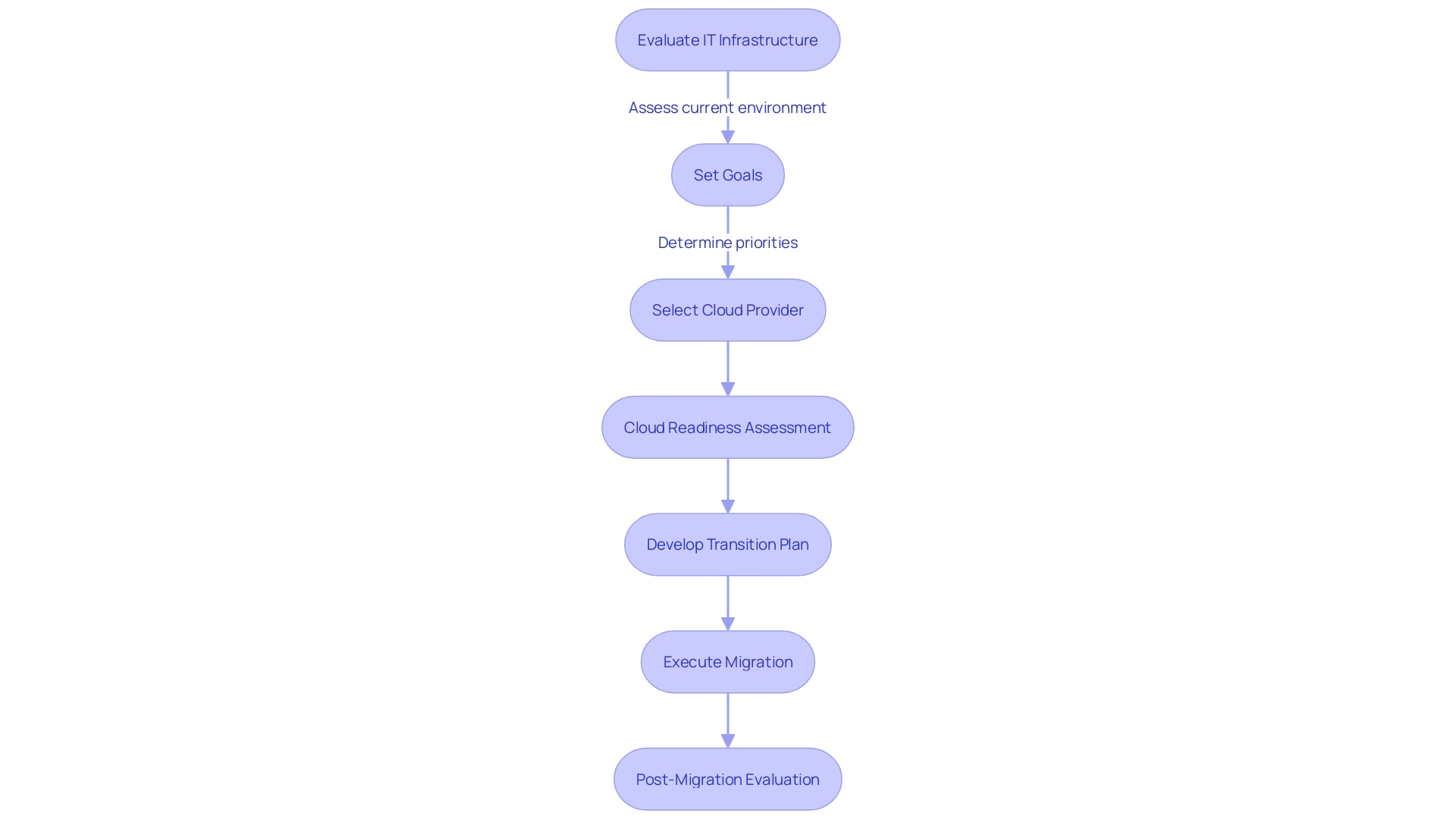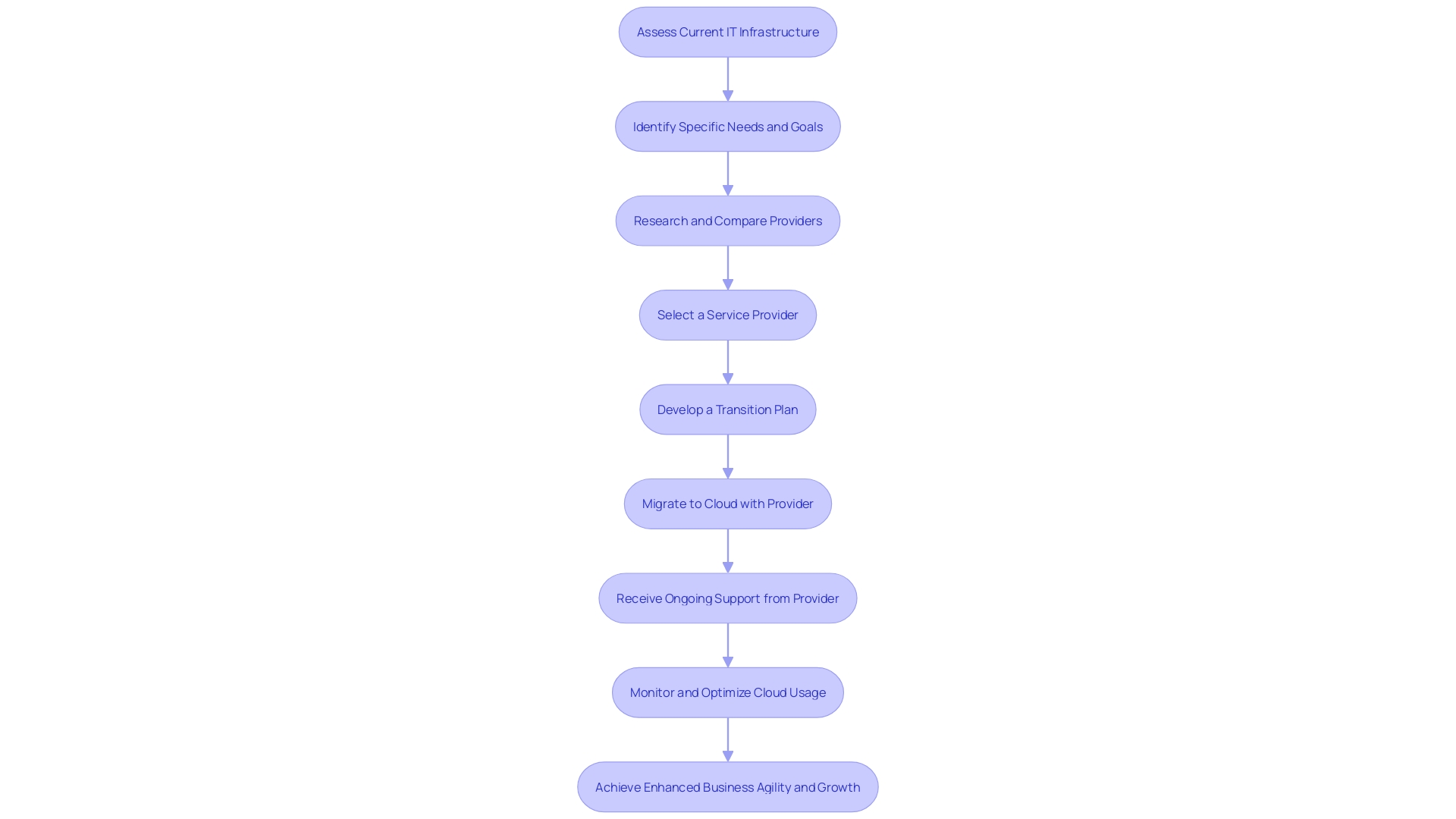Introduction
Cloud migration consultants play a crucial role in helping organizations transition their IT infrastructure to cloud platforms. With their expertise and meticulous project management skills, these consultants craft and execute migration strategies that align with the unique needs and goals of each organization. In addition to technical considerations, consultants also address strategic aspects, ensuring that the organization maximizes the benefits of cloud adoption.
This article explores the key roles of cloud migration consultants, the benefits of working with them, different migration strategies, how to select the right consultant, successful case studies, challenges and best practices, and the importance of customized solutions. By delving into these topics, readers will gain valuable insights into the complexities and strategies involved in cloud migration, empowering them to make informed decisions and navigate the cloud landscape with confidence.
Key Roles of Cloud Migration Consultants
Consultants specialized in facilitating the transition of an enterprise's IT infrastructure to cloud platforms play a crucial role. The strategic importance of their role is underscored by the intricate nature of cloud technologies and the necessity for meticulous project management. These consultants utilize their knowledge to develop and implement a relocation plan that is in line with the distinct requirements and objectives of a company, guaranteeing a smooth and effective change.
Effective migration hinges on a multitude of factors. A prime example is the methodical approach adopted by one organization, which employed a multiprovider, multipartner strategy. The early integration of partners and promotion of inter-organizational collaboration was instrumental in navigating the complexities of the transition. Furthermore, security considerations were of utmost importance, with a focus on comprehending the intricacies of legacy systems to adhere to the rigorous criteria of the environment.
The flexibility of consultants who specialize in transferring data to the cloud is further demonstrated by their capability to develop resources such as a thorough guidebook to facilitate widespread data collection and information sharing. Prioritization of applications based on business imperatives, such as processing times and sensitivity, is also a critical function, supported by a dynamic blend of automation and manual processes.
The responsibility of consultants who assist with transferring data to the skies is not just technical but also strategic. For instance, the Central and North West London NHS Foundation Trust's extensive network of health care services necessitated a robust technological framework. The consultants' strategic planning ensured that the diverse technological needs of the Trust's services were met, thereby supporting the delivery of essential care.
Recently, there has been a significant trend of cloud repatriation in the cloud computing landscape. According to a study by Citrix, 25% of UK surveyed enterprises have moved half or more of their cloud-based workloads back to on-premises infrastructures. This underscores the significance of a well-planned approach and the requirement for consultants to guide through such intricate choices.
In the end, migration advisors are the designers of a plan that must be customized to the unique needs of a company. This involves assessing the existing technology stack, app features, and architecture to ensure readiness for deployment to the cloud. Their role is not only to manage and optimize the infrastructure of cloud computing but also to ensure the business reaps the full range of benefits from the adoption of cloud computing, including IT productivity, business innovation, and access to advanced technologies like generative AI.

Benefits of Working with Cloud Migration Consultants
Leveraging the knowledge of migration consultants is crucial in navigating today's intricate technology landscape. Having a history of converting extensive operations into flexible settings for ongoing delivery of value, these experts are prepared to guide enterprises through the intricacies of cloud migration. A standout example is TBC Bank, Georgia's premier financial institution, which pivoted to improve its digital product time-to-market, thereby enhancing customer and employee experiences. Hiring experts who have a thorough grasp of planning, structure, and technology can greatly enhance a company's achievements in the digital domain.
Considering the most recent information from Citrix indicating a shift towards repatriation of data among UK organizations, the significance of migration consultants becomes even more crucial. They ensure that your approach to the cloud is resilient, future-proof, and in line with the best practices in the industry, potentially preventing costly reversals in cloud direction. Moreover, influential individuals such as David S. Linthicum, with his vast experience and publications including 'An Insider's Guide to Cloud Computing', emphasize the significance of harnessing experienced knowledge in your journey to the skies.
A strong transfer strategy to the skies is essential for any business contemplating a shift. It's essential to engage with providers recognized for their success, security, and service range that meets your organizational objectives. As you embark on this transition, assessing your IT infrastructure to identify specific needs and goals is the first step. Afterward, a comprehensive comparison of providers will guide you to a partner that can support the development of a detailed transition plan. This ensures not only a seamless shift to the skies but also positions your company to harness advanced technologies like generative AI, which is reshaping the value of cloud adoption across various sectors.
In the end, the choice to hire consultants for transferring data to the cloud should be motivated by the aim to optimize return on investment in cloud computing, enhance efficiency in IT operations, foster creativity in business, and utilize state-of-the-art technologies. Their assistance enables companies to navigate the intricacies of transferring to the skies with assurance and accuracy.

Cloud Migration Strategies
A comprehensive strategy for transitioning to the cloud involves more than just a move to the cloud; it represents a critical shift in an organization's IT infrastructure, with transformative effects on business agility, security, and scalability. Experienced cloud transfer advisors are essential in leading companies through this intricate procedure. They evaluate the distinctive attributes of the company's existing IT assets, including performance and complexity, and assess the appropriateness of workloads for relocation. This careful planning helps to guarantee a transfer that is customized to the organization's specific requirements, while also taking into account the long-term perspective of return on investment.
By emphasizing proven methodologies, consultants specialized in transitioning to the cloud enable businesses to leverage the potential of emerging technologies such as AI, which is reshaping the IT environment of organizations at a fast pace. They also highlight the significance of choosing a service provider in the sky with a proven track record of success, strong security protocols, and a range of services that align with the company's objectives. This strategic partnership is crucial for establishing a comprehensive transition plan and facilitating a seamless move to cloud-managed services.
The significance of an effective transition to the cloud is underscored by research suggesting that by 2025, 85% of enterprises will have adopted a cloud-first policy. Nevertheless, the difficulty resides in the execution, as only 30% of businesses possess a clear understanding of their cloud expenditures. Hence, the responsibility of consultants specializing in transferring to the cloud is not just to carry out the shift but also to offer continuous assistance in enhancing investments in cloud computing and achieving the complete range of advantages that cloud computing presents.

Selecting the Right Cloud Migration Consultant
Choosing a migration consultant for the cloud is a pivotal decision that influences the trajectory of your organization's transition. A comprehensive Cloud Readiness Assessment is foundational, necessitating an analysis of your existing technology infrastructure, including the technology stack, application specificity, architectural design, and data. Migrations pose unique challenges, particularly for applications tied to specialized hardware or those not readily virtualized, such as certain Internet of Things (IoT) applications or cryptocurrency cold wallets.
David S. Linthicum, a prominent figure in computing and author of 'An Insider’s Guide to Cloud Computing', recommends a cautious, step-by-step approach to adopting the technology. He stresses the significance of identifying the appropriate moment for a transition to the sky, which may be impacted by the state of existing hardware, imminent system upgrades, or storage requirements.
When evaluating a consultant, look for those with a proven track record of successful transitions, strong security protocols, and a range of services that align with the goals of your organization. In addition to technical expertise, your selected consultant should acknowledge the significance of the interaction between technology, processes, and people in a successful transition to the skies. A business's AI initiatives, for example, benefit from a cloud-native approach, which offers cost efficiency, scalability, and enhanced security.
In your assessment, ask critical questions about your operation's current state: What's running on your infrastructure? What skills are needed to manage your chosen platform? How do costs compare to your current setup? This due diligence will guide your approach and guarantee a smooth transition, backed by a cloud-managed services provider that can provide a customized transition plan and continuous support.

Case Studies: Successful Cloud Migration Projects
Analyzing successful case studies of the successful transfer of data to a remote server offers priceless understanding into the intricacies and approaches involved in such transformative initiatives. Lincoln Financial Group, under the leadership of Rob Klaczak and Satyendra Kumar, exemplifies a proactive approach to migration to the cloud. Their transition from aging legacy systems to a dynamic architecture underscores the importance of strategic planning, which includes adopting a multiprovider and multipartner strategy, prioritizing security, and fostering collaboration across organizational boundaries. A key aspect of their success was the creation of a Wikipedia-style playbook, which facilitated information sharing and data collection throughout the organization. This approach enabled them to prioritize applications based on business needs and adopt a dynamic planning method that combined automation with manual processes.
In a similar vein, the experience of Swiss healthcare insurer Sanitas illustrates the innovation that can be achieved through migration. The company's transition to the online environment aimed to enhance developer efficiency, allowing them to concentrate on application and database development rather than the management of on-premises infrastructure. This transition was instrumental in fostering a culture of rapid innovation and improved customer service.
The situation of Knorr-Bremse, a German manufacturing giant, emphasizes the financial advantages and strategic growth opportunities enabled by infrastructure. The company's comprehensive Azure migration was part of a strategic initiative to promote digitization and position themselves as a data-driven enterprise, thereby eliminating datacenter costs.
Supporting these narratives, statistics show a clear trend towards the adoption of cloud services, with Gartner predicting that by 2025, 85% of enterprises will prioritize the use of cloud technology. However, it's important to note that transitioning to the online environment can present challenges. Migrating applications built on unique hardware that cannot be virtualized, such as specific IoT apps, requires considerable skill and effort. A cloud readiness assessment from a technology perspective is crucial, as David S. Linthicum, an industry expert, suggests.
When considering a transition to cloud-managed services, it's imperative to look for providers with a proven track record of success, robust security measures, and a suite of services that align with your organization's specific needs and objectives. The first step in this process is to evaluate your current IT infrastructure and identify your goals. After this, a well-organized transition plan is crucial to guarantee a seamless move, supported by the assistance of your selected cloud-managed services provider.

Challenges and Best Practices in Cloud Migration
Cloud transition, a crucial step in digital transformation, is not without its hurdles. Organizations aiming to modernize their systems must navigate through a labyrinth of technical complexities and strategic decisions. To clarify the process, let's explore the obstacles commonly faced and the optimal approaches for a successful migration.
At the forefront, it's imperative to adopt a multiprovider, multipartner strategy, as underscored by Satyendra Kumar, who emphasizes the importance of fostering early collaboration across organizational boundaries. This collaborative approach is crucial, particularly when dealing with the intricacies of security during the transition from legacy systems to the cloud-based environment. In doing so, it's crucial to work in close quarters with all partners to ensure a seamless alignment with the current security standards.
Furthermore, a thorough guide similar to Wikipedia can democratize the data collection and knowledge dissemination across the organization, thus simplifying the transfer procedure. Prioritization of applications is also a key factor, considering elements such as processing times and sensitivity, while adopting a dynamic planning approach that smartly integrates both automation and manual processes.
A testament to the intricacy of migrating to the cloud comes from the experience of the team behind Skai's omnichannel advertising platform. They experienced performance bottlenecks as additional features and data were introduced, emphasizing the requirement for a strong cloud-based solution that can effectively adapt to increasing demands.
Additionally, it's worth noting the architectural considerations when transitioning to the cloud. Organizations must evaluate their technology stack, application characteristics, and architecture to ensure compatibility. Applications developed on distinctive, non-virtualizable hardware present a notable difficulty and necessitate a more subtle approach to transitioning.
Statistics from a Citrix study reveal a surprising trend: 25% of UK organizations have already repatriated half or more of their cloud-based workloads to on-premises solutions. This highlights the importance of a carefully planned transition plan that is in line with the long-term business objectives, rather than solely focusing on immediate financial advantages.
Keep in mind, the effectiveness of serverless computing models, where businesses pay only for the resources they use, and privacy considerations will continue to shape the computing landscape in 2024.
To conclude, as per the advice of industry expert David S. Linthicum, it is crucial to start with a clear understanding of the 'why' behind transitioning to the cloud. This foundational clarity, combined with a well-crafted approach and the selection of the right partners and providers, will pave the way for a successful adoption of cloud computing.
The Importance of Customized Cloud Migration Solutions
Customizing the process of transitioning to the cloud to the specific requirements of a company is not only advantageous; it is essential. A tailored approach to transferring infrastructure, including data, applications, and services, to cloud platforms is a comprehensive plan that guides businesses. This strategy should account for the unique cost, performance, and complexity characteristics of each IT asset, as no two organizations are the same. For example, specific tasks may not be suitable for online storage, emphasizing the requirement for a customized transfer strategy.
Choosing a service provider from the sky with a proven success record, strong security measures, and services that align with organizational goals is crucial. The first step is a thorough assessment of the current IT infrastructure to identify needs and goals, followed by diligent research to compare providers. Upon selecting a provider, a comprehensive transition plan is developed to guarantee a seamless migration to a different computing environment. The support from a managed services provider can be extensive, as witnessed in the collaboration between Solve. Care and CloudKeeper, which aims to revolutionize healthcare management through advanced optimization solutions.
The urgency for cloud-based solutions in modern businesses is underscored by the increased demand for data center modernization, which is seen as a strategic competitive advantage by 91% of organizations, according to Enterprise Strategy Group research. Google's recent announcement of a generative AI search service packaged with Google Distributed Cloud is a testament to the industry's direction towards bundled services that simplify complexity and accelerate the value derived from AI projects. Such developments represent the broader trend of cloud migration as a catalyst for business growth, digital transformation, and access to cutting-edge technologies.

Conclusion
In conclusion, cloud migration consultants play a crucial role in guiding organizations through the complexities of transitioning their IT infrastructure to cloud platforms. They craft migration strategies that align with each organization's unique needs and goals, addressing both technical and strategic considerations.
Working with cloud migration consultants offers numerous benefits. These professionals have a proven track record of transforming operations into agile environments, enabling organizations to continuously deliver value. They ensure that cloud strategies are resilient, future-proof, and aligned with industry best practices, preventing costly reversals.
Cloud migration strategies require careful planning and analysis. Consultants determine the suitability of workloads for migration and emphasize established best practices. They help businesses harness the power of new technologies like AI and assist in selecting the right cloud service provider.
Successful cloud migration case studies provide valuable insights. Companies like Lincoln Financial Group, Sanitas, and Knorr-Bremse exemplify the importance of strategic planning, innovation, and financial benefits enabled by cloud infrastructure.
To overcome challenges, collaboration, comprehensive playbooks, prioritization of applications, and dynamic planning are key best practices. Organizations should evaluate their technology stack, application characteristics, and architecture to ensure compatibility. It's important to start with a clear understanding of the reasons behind cloud migration and select the right partners and providers.
Customized cloud migration solutions are imperative as they account for each organization's specific needs. A personalized approach ensures a smooth transfer of infrastructure to the cloud. Selecting a cloud service provider with a proven success record and services that align with organizational goals is crucial.
In today's business landscape, cloud-based solutions are essential for modernization and competitive advantage. Cloud migration consultants help organizations leverage the value of cloud computing, digital transformation, and cutting-edge technologies. By partnering with these experts, organizations can navigate the complexities of cloud migration with confidence and precision.




